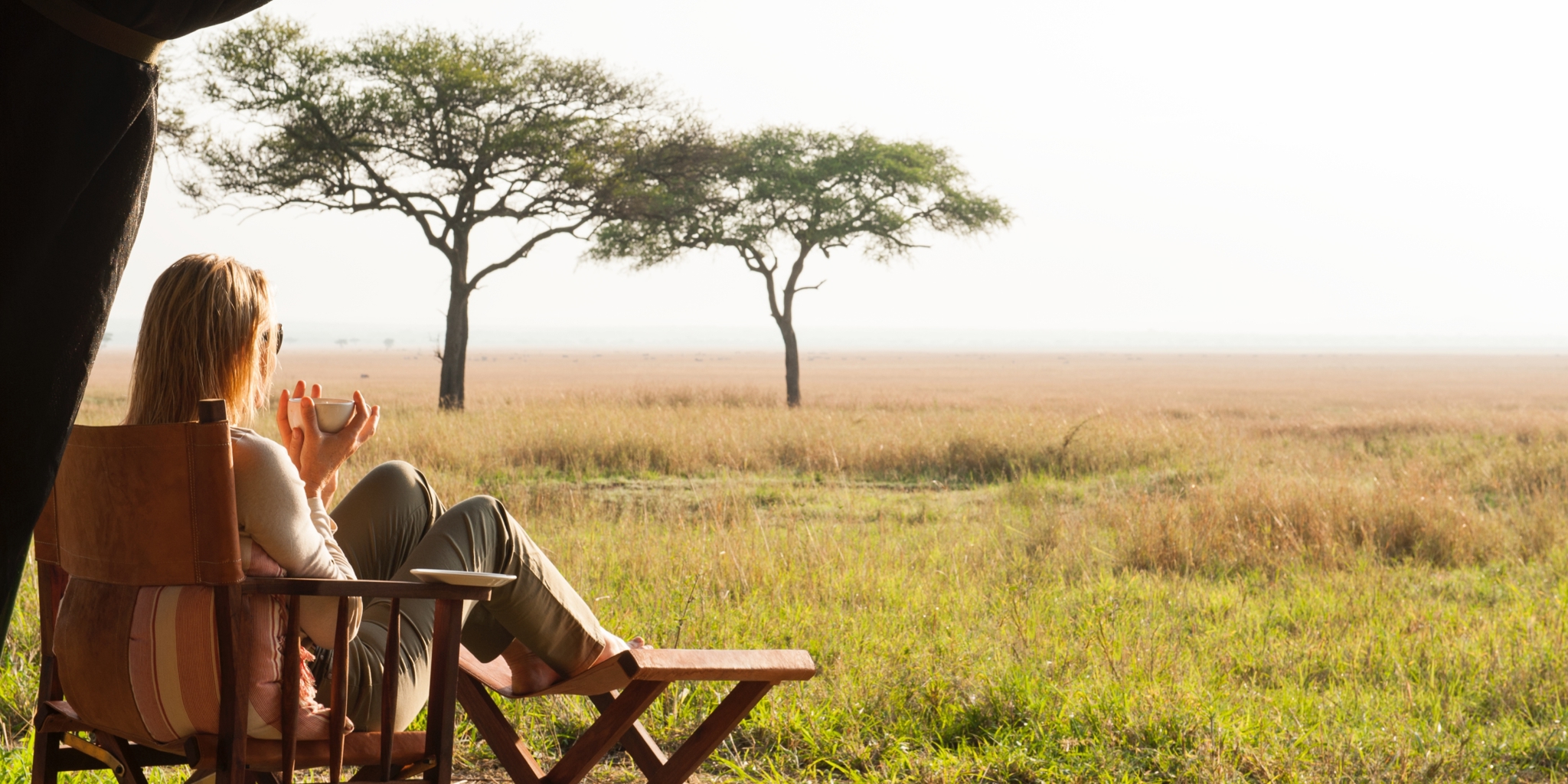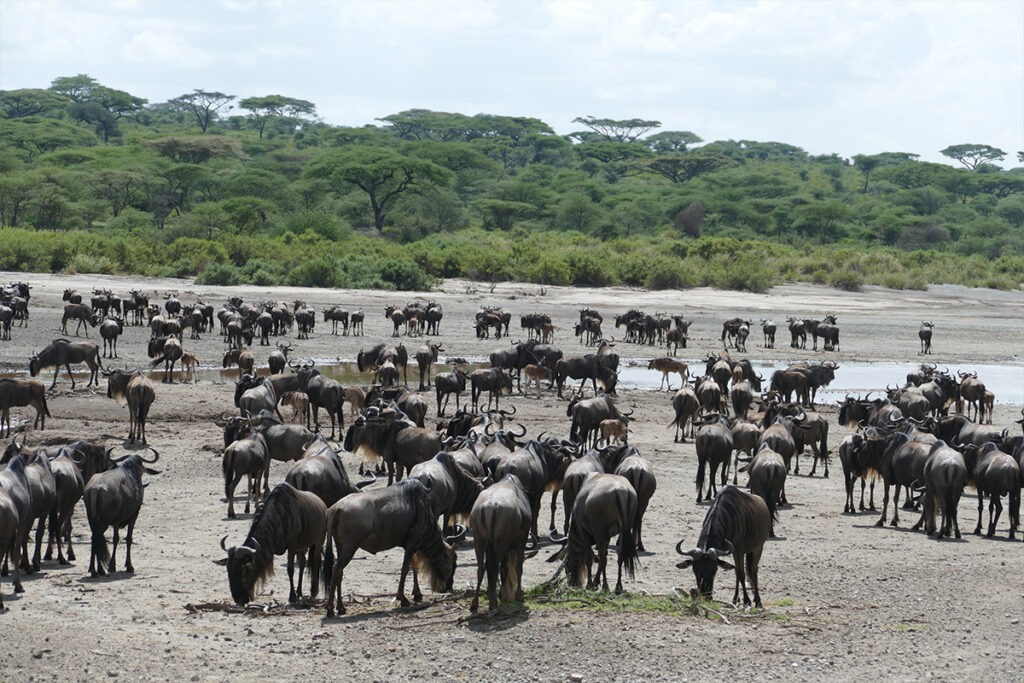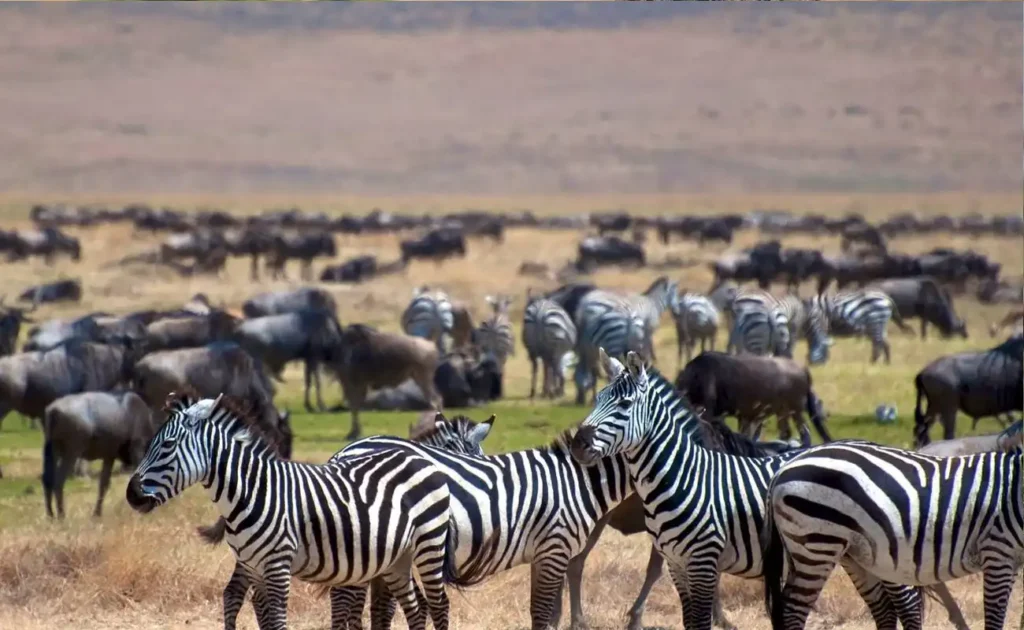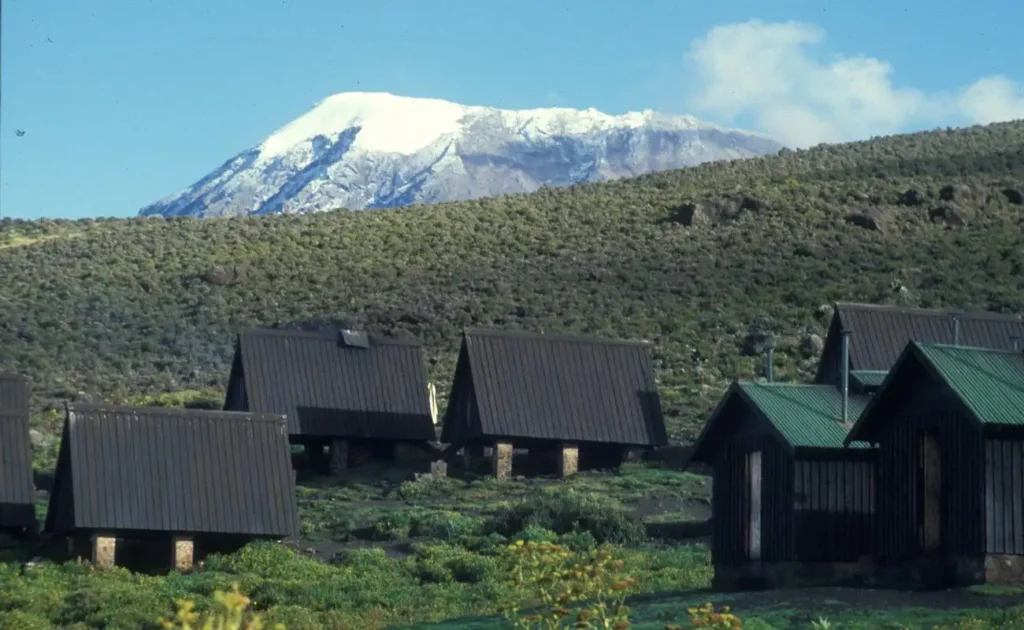Can embarking on a solo safari to Tanzania redefine your connection to nature and self-discovery? These isolated expeditions into the heart of Africa are more than just trips; they are transformative experiences that challenge and inspire travellers on an intimate level. While exploring the vast Serengeti or the majestic Ngorongoro Crater, individuals often find the solitude as enriching as the breathtaking wildlife encounters.
Tanzania’s rich wildlife heritage and diverse ecosystems have been drawing solo adventurers since the early explorations at the turn of the 20th century. Today, over 1 million visitors annually seek the thrill of encountering the Big Five within its national parks. The serene yet exhilarating atmosphere of a solo safari creates unique opportunities for personal reflection and unmatched wildlife observation, making it a preferred choice for seasoned travellers.

Planning Your Tanzania Solo Safari
Embarking on a solo safari in Tanzania requires some thoughtful planning. The first decision is choosing the best time to visit. While the dry season from June to October offers excellent wildlife viewing, the wet season, known for lush landscapes, can also be appealing. Additionally, consider the length of your trip to ensure you have enough time to explore key parks like Serengeti and Tarangire. Balancing your schedule can help you make the most of your adventure.
Another crucial step involves selecting the right destinations within Tanzania. Deciding among the famous Ngorongoro Crater, the expansive Serengeti, or the lesser-known gems like Ruaha depends on your interests. Each park boasts unique wildlife and sceneries, offering endless photographic opportunities. According to this post, researching each location in advance can help tailor your adventure to suit your preferences. So, make sure to reflect on which sights and experiences you value most.
Packing wisely is vital for a successful trip. Essentials include lightweight clothing for daytime heat and layers for cooler evenings. Don’t forget items like binoculars, insect repellent, and a sturdy hat for sun protection. Bringing a reliable camera and extra memory cards will ensure you capture all the incredible moments. Proper preparation allows you to stay comfortable and focused on wildlife encounters.
Accommodations play a significant role in your safari experience. From luxury lodges to rustic camps, the options are diverse. Here is the article on fancy tents in Tanzania, which offers insights into enjoying a cozy stay amidst nature. Picking the right place can add comfort and charm to your adventure. Therefore, consider your budget and desired experience when making a choice.
Choosing the Right Season to Travel
Selecting the ideal time for your solo safari in Tanzania is key to a memorable adventure. The dry season, from June through October, is popular for wildlife viewing in renowned parks like Serengeti. During this period, animals gather around waterholes, making spotting them easier. However, this is also a crowded time, with many tourists visiting, potentially influencing the experience. Deciding when to go can shape your journey significantly.
The wet season, which spans November to May, presents a different kind of charm. Lush green landscapes and dramatic skies offer an impressive backdrop for photographers. If you’re a birder, this is a great time as many migratory birds arrive. Some areas might be less accessible due to rain, but the peace and solitude can be rewarding. Different seasons reveal diverse facets of Tanzania’s beauty.
Here’s a quick overview to help plan:
| Season | Months | Highlights |
|---|---|---|
| Dry Season | June – October | Best for animal sightings, cooler weather |
| Wet Season | November – May | Breathtaking scenery, bird watching |
Consider what you want most from your safari before making a decision. Beyond just the animals, think about the experience you want to have, like immersion in lush landscapes or the thrill of watching wildlife migrations. Weighing these considerations can guide you towards the right choice. Ultimately, both seasons promise memorable encounters; it’s about what excites you most.
Selecting Destinations Within Tanzania
Choosing the right destinations within Tanzania is a crucial part of planning your solo safari. From the iconic Serengeti, known for the Great Migration, to the Ngorongoro Crater, each place promises unique experiences. Serengeti’s vast plains offer unmatched wildlife viewing, especially big cats like lions and cheetahs. Meanwhile, Ngorongoro hosts a multitude of species within its volcanic crater, providing spectacular scenery. Your choice of location should reflect your personal interests and adventure goals.
For those seeking off-the-beaten-path adventures, parks like Ruaha and Katavi might be appealing. Ruaha, with its baobab trees and large elephant herds, promises a wild and more secluded experience. Similarly, Katavi boasts undisturbed wildlife and dramatic landscapes. These less-traveled destinations provide tranquility, often missed in more populated areas. Discovering hidden gems can enrich your safari significantly.
To make an informed decision, consider what each park offers:
| Destination | Highlights |
|---|---|
| Serengeti | Great Migration, Big Cats |
| Ngorongoro Crater | Compact wildlife viewing, stunning landscapes |
| Ruaha | Seclusion, Elephant herds |
| Katavi | Undisturbed nature, fewer tourists |
Researching each destination’s unique offerings can aid in tailoring your experience. Are you more thrilled by the idea of huge wildlife gatherings, or do you prefer isolated beauty? Weighing these options can help align your safari with personal interests. The right blend of locations can make your trip truly memorable.
Essential Tips for Solo Travelers
Traveling solo on a safari in Tanzania can be an exciting and enriching experience. Safety should always be a top priority. Stay informed about local guidelines and respect park regulations. It’s vital to keep a charged mobile phone and a backup charger. This ensures you stay connected and can call for help if needed.
Another crucial tip is to pack appropriately for the adventure. Essential items include sunblock, insect repellent, and a comfortable pair of shoes. Also bring a first aid kit and any personal medication. These items will keep you well-prepared for unexpected situations. A good packing list can make your journey smoother.
Consider joining guided tours for certain parts of your safari. Guides are knowledgeable about the area and can provide valuable insights. Plus, touring with others occasionally can offer a sense of community and safety. It’s also a fantastic way to meet fellow adventurous travelers. Blending solo exploration with guided sections offers the best of both worlds.
Navigating local customs can enhance your travel experience. Learning a few Swahili phrases, like “Jambo” for hello, can open doors to more meaningful interactions. Here’s a quick list to get started:
- “Asante” – Thank you
- “Karibu” – Welcome
- “Polepole” – Slowly
Embrace the journey with an open mind and flexibility. Plans may change due to weather or unexpected events, so staying adaptable helps. Remember to enjoy the solitude and the beauty surrounding you. A positive attitude can transform your safari into a truly memorable adventure. Every experience, big or small, contributes to the larger journey.
What to Pack for a Safari Adventure
Preparing for a Tanzania safari requires careful packing to ensure comfort and convenience. Clothing is a critical consideration. Pack neutral-toned attire like khaki and olive to blend in with the environment. These colors are beneficial for wildlife viewing, as they minimize disturbance. Also, include lightweight attire for the day and warmer layers for cooler evenings.
Next on the list should be essential accessories. A wide-brimmed hat and quality sunglasses protect against the intense sun. Don’t forget sunscreen to keep your skin safe during long game drives. A sturdy pair of binoculars is useful for close-up views of distant animals. Small items like these can make a big difference during your adventure.
Here’s a table to keep your packing organized:
| Item | Purpose |
|---|---|
| Binoculars | Enhance wildlife viewing |
| Sunscreen | Protects skin from sunburn |
| First Aid Kit | Addresses minor injuries |
| Camera | Capture memories |
Don’t underestimate the need for basic first aid supplies. A well-stocked first aid kit can handle minor scrapes and cuts. Include must-haves like band-aids, antiseptic wipes, and pain relievers. Personal medications should also be part of your pack. Being prepared for health needs ensures peace of mind on your journey.
Always keep in mind the luggage weight limit, as many safari vehicles and small planes restrict it. Choose versatile clothing items that can be easily mixed and matched. Packing smarter, not heavier, means you have what you need without being bogged down. A carefully curated bag allows for flexibility and ease during your travel. Ready, set, safari!
Safety Measures for Solo Travelers in Tanzania
Traveling alone in Tanzania demands particular attention to safety. Keeping informed about your surroundings is critical. Always stay updated on the local news and weather conditions. Understanding local customs and abiding by them can also help you avoid unnecessary conflicts. Moreover, always maintain clear communication with trusted individuals.
Keeping contact details for local authorities and your embassy can be a lifeline. Ensure your mobile phone is fully charged, and consider carrying a portable power bank. If you experience vehicle trouble or require assistance, these contacts can be invaluable. Here’s a simple list of essential contacts:
- Local Police: 112
- Medical Emergency: 115
- Embassy Contact Information
Use reputable guides and safari operators to enhance your safety. These professionals know the landscapes, wildlife behaviors, and safe pathways well. They can offer both companionship and security, which is especially beneficial for solo travelers. Joining group tours occasionally ensures you are not completely isolated. Local experts provide invaluable insights and a sense of security.
Opt for well-reviewed accommodations with secure surroundings. Many reputable lodges and camps are equipped with safety measures for solo travelers. Secure your belongings and use provided safes for valuables. It’s also wise to lock your tent or room whenever you are not present. These steps ensure a secure base as you enjoy your travel adventures.
Lastly, keep emergency supplies handy. Items like a first aid kit, flashlight, and whistle should be easily accessible. Having a plan in place for emergencies, like knowing evacuation routes, can make all the difference. Preparing for unexpected scenarios boosts your confidence and ensures you can handle situations calmly. Ready yourself thoroughly to enjoy your solo expedition to its fullest.
Top Wildlife Experiences on a Tanzania Solo Safari
Embarking on a solo safari in Tanzania offers thrilling wildlife encounters. One of the most iconic experiences is witnessing the Great Migration in Serengeti National Park. Here, thousands of wildebeests and zebras make their annual trek across the plains. This spectacle showcases not only the power of nature but also its unpredictability. Timing your visit right can guarantee a front-row seat to this natural wonder.
Lions are another highlight of game drives in Tanzania. Serengeti and Ngorongoro Crater are renowned for their lion populations, often seen lounging under acacia trees or stalking prey. Observing these majestic creatures in their natural habitat evokes awe and respect. The roar of a lion at sunrise is an unforgettable moment that resonates with many travelers. Capture such sights on camera to relive your adventure.
Venturing to Tarangire National Park offers encounters with large elephant herds. Known for its baobab-studded landscape, Tarangire provides unique photography opportunities as elephants roam freely. Their interactions, from playful calves to wise elders, provide insights into social dynamics among animals. Watching them bathe or graze peacefully can be both calming and exhilarating. Such close encounters are integral to understanding wildlife behavior.
If you’re interested in birdwatching, Lake Manyara National Park is ideal. Home to over 400 species, it’s vibrant ecosystem attracts flamingos, pelicans, and storks year-round. Walking safaris offer a closer view, allowing for an immersive birding experience amidst lush greenery and peaceful waterside vistas. A pair of binoculars will enhance these moments significantly as you spot rare species flying by.
You might also explore night safaris that reveal lesser-seen nocturnal creatures like bush babies or leopards prowling under moonlight shadows around Selous Game Reserve’s remote areas too vast daytime open degrades classical perceptions own landscape’s mysterious allure transcends daylights firmly fixes itself memory lasting impact yet future endeavors anywhere forever cherish revolving rustic-soulful-ruminative reminder alignment harmonious serenity surrounding fully-extravagant existence core timelessness intercepts reciprocally invigorate compelled awe-inducing rhythms forged vibrantly organismic wholeness – forms inviting involvement participatory visitation eternal lively awakening universal celebration natural phenomena gracefully performing symphony authenticity immersed co-existing indefinitely unique offerings inviting exploration “welcome” instinctively embraced.”
Navigating Cultural Etiquette and Interaction
Embracing Tanzania’s rich cultural tapestry enhances your safari adventure. Greetings are an essential first step, where a warm smile and “Jambo” (hello) can open doors to friendly exchanges. It’s customary to shake hands swiftly, sometimes extending this introduction with an inquiry about family or well-being. Dressing modestly in villages shows respect for cultural norms. Understanding these simple yet significant gestures enriches your interactions.
Engaging with the local Maasai community offers unique insights into their traditional lifestyle. Known for their vibrant attire and beaded jewelry, the Maasai are friendly and welcoming. If invited to participate in a song or dance, join in respectfully. Always ask before taking photographs, as it’s courteous and respects their privacy. Their stories and customs add depth to your safari narrative.
The concept of “polepole,” meaning slowly, is a cherished aspect of Tanzanian life. This approach emphasizes patience and taking time to appreciate life’s moments. Whether waiting for service or traveling, embracing “polepole” fosters patience and aligns expectations with local rhythms. It’s a reminder to slow down, savor experiences, and enjoy the journey. Adopting this mindset can lead to more fulfilling encounters.
Here’s a table summarizing key cultural etiquette tips:
| Action | Tip |
|---|---|
| Greeting | Use “Jambo” and shake hands |
| Photographs | Ask for permission first |
| Dressing | Wear modest clothing in villages |
| Mindset | Embrace “polepole” – take it slow |
Being open to learning from and sharing with locals makes your journey even more memorable. Simple gestures like buying handmade crafts support local artisans and forge connections. Respecting cultural practices not only enriches your trip but also leaves a positive impression. As you navigate these interactions, appreciate the vibrant culture that surrounds you. Every encounter holds the potential to deepen your understanding and enhance your experience.

Frequently Asked Questions
Venturing on a solo safari in Tanzania offers both thrilling wildlife encounters and a deep connection to nature. These questions address common queries and provide insights into making the most of this amazing adventure.
1. What is the best time to go on a safari in Tanzania?
The best time for a safari in Tanzania is typically during the dry season, from June to October. During these months, wildlife is easier to spot as animals gather around waterholes and rivers, and the vegetation is less dense. However, visiting during the wet season, from November to May, offers lush landscapes and fewer crowds, making it ideal for birdwatching and enjoying a quieter experience.
Each season has its own unique charm. The dry season is great for experiencing the Great Migration in the Serengeti, while the wet season boasts rich greenery and more affordable travel. Choosing when to visit depends on personal preferences, such as whether you prioritize iconic wildlife events or value tranquility amidst nature’s lush beauty.
2. How do I ensure my safety while traveling alone in Tanzania?
Ensuring safety on a solo safari involves several key steps. Researching and booking reputable safari operators and guides is essential. Additionally, prepare by understanding local customs, carrying a charged phone, and keeping emergency contacts handy. Staying informed about your surroundings can greatly enhance your security and peace of mind.
Sticking to designated paths and not wandering alone after dark are important safety measures. Respecting wildlife and maintaining a safe distance prevent accidents. By following these guidelines, solo travelers can enjoy an adventurous, secure safari experience while savoring the wonders of Tanzania’s wildlife.
3. What should I pack for a safari in Tanzania?
Packing for a Tanzania safari requires thoughtful planning to ensure comfort and readiness for adventure. Include lightweight, neutral-colored clothing for blending into the environment, alongside layers for cooler evenings. Sun protection items like a hat, sunglasses, and sunscreen are also essential, due to the intense sun exposure.
Other crucial items are binoculars for distant wildlife viewing, a camera for unforgettable moments, and a basic first aid kit. Additionally, a power bank can help keep electronic devices charged. A well-prepared pack guarantees you’re equipped for a memorable safari, ready to tackle varied settings and climates.
4. How can I experience local culture during my safari trip?
Experiencing local culture in Tanzania enriches your safari journey and offers insights into the lives of its people. Engage with communities by visiting local markets, participating in cultural tours, and interacting with guides who share insights into traditions and customs. Learning a few Swahili phrases can open the doors to deeper connections with locals.
Respectful observation and participation in traditional practices enhance your understanding. Consider supporting local artisans by purchasing handmade crafts. These simple actions respect cultural integrity while providing a vibrant, full-bodied experience of Tanzania beyond its wildlife. Connecting with the community offers memorable and impactful interactions.
5. What wildlife can I expect to see on a Tanzanian safari?
A Tanzanian safari promises encounters with a wide array of wildlife. The Big Five—lions, leopards, elephants, buffalo, and rhinoceros—are highlights. Serengeti National Park is renowned for its dense lion population and Great Migration spectacle. Ngorongoro Crater, Lake Manyara, and Tarangire further showcase unique ecosystems teeming with animals.
Beyond the Big Five, visitors can spot giraffes, wildebeests, hippos, and a plethora of bird species. Each park offers distinct opportunities to observe animals in their natural habitat. Timing, park choice, and ecosystem variation contribute to diverse wildlife sightings, ensuring every safari is unique and unforgettable.



